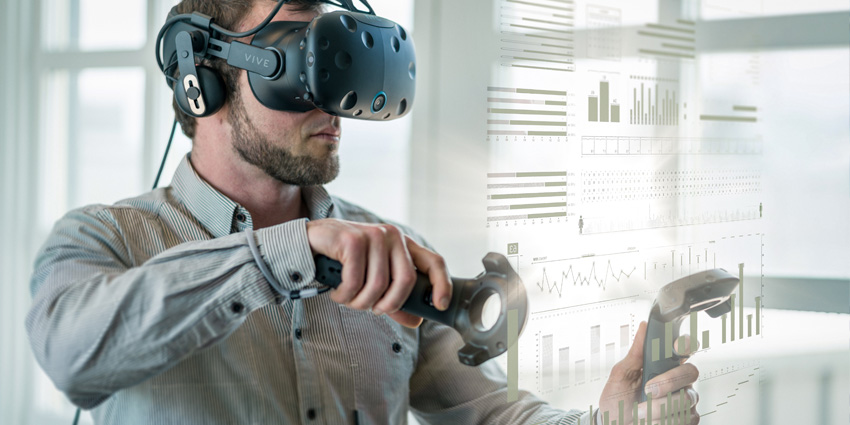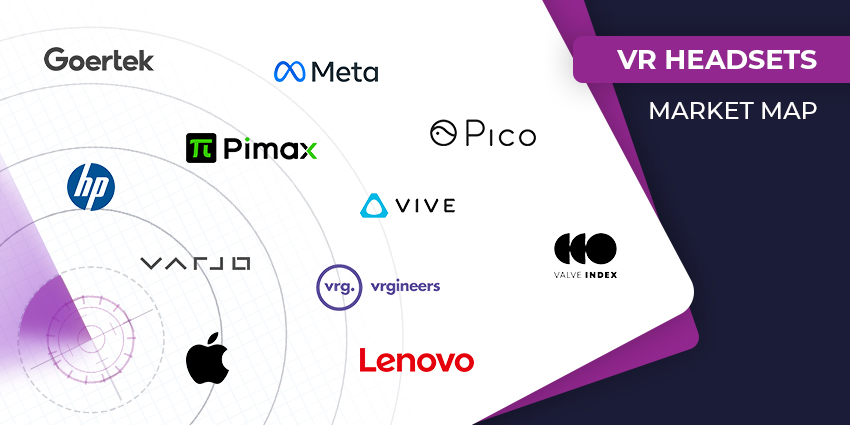Enterprise-grade XR solutions are growing at an exponential rate. Many vendors are flooding the marketplace with products claiming to solve workplace challenges and optimise operations.
Navigating this new world can prove hard. An enterprise ready to adopt XR must ask themselves various questions, not just finding the XR solution to suit their use case but also elements such as privacy, security, onboarding, XR training, cost, and effectiveness.
Moreover, the past year has brought many eyes to the XR space. The XR marketplace has gained a lot of acceleration thanks to the Metaverse publicity and the Meta Quest boom, which has greatly assisted the evolution of XR.
XR Today’s Rory Greener sat with XR SME and Industry Expert Randy Nunez to discuss XR in the enterprise in 2023.
The Most Promising Use Cases for XR in 2023
XR present countless trusted and emerging use cases to optimise workflows. Whether an end-user is operating from an industrial, manufacturing or office workspace, XR hardware and software could present opportunities to enhance a worker’s experience.
In his interview with XR Today, Nunez outlined three notable XR enterprise use cases. One is “design visualisation,” the ability to take digital content and reproduce it in an immersive environment.
Nunez added:
So, for example, a lot of manufacturers, and other architecture companies can digitally represent the content, most have CAD data models of some type, and they will represent them on a 2D screen. But you can leverage the [immersive] technology, represent it in a 3D environment, and perhaps reduce the number of prototypes physical prototypes.
Nunez noted that a firm can optimise turnaround times and operations using XR, adding, “if you’re building a [physical] model and you want to change the colour, it can take you a long time to do that. In an immersive 3D environment, you can change the colour in seconds.”
XR for Enterprise Training
Moreover, another example Nunez gave was enterprise training or “guided instructions.”
XR devices can provide hands-free immersive content such as guides, manuals, and CADs as assistive references while an on-site worker performs tasks such as repair and maintenance operations.
Nunez also added that immersive tools could provide accurate representations of high-cost items. Workers can access a digitally reproduced high-cost item during training, design, and on-site operations.
Nunez explained:
So at some facilities, it might cost you a million plus dollars to create a physical model, and now I can reproduce that in a digital model. Then there’s high-consequence training. Another good use case for virtual reality because if you’re training someone to handle a meltdown in a nuclear reactor, you might want to try doing that digitally first versus doing it physically. Also, in augmented reality, you can actually train someone while they’re doing the work.
Nunez gave the example of training a worker to operate particular machinery. The trainer can put 3D objects in the trainee’s space and point at what button to push or what tool to adjust. Trainees can see and interact with the content on an AR headset hands-free.
Moreover, Nunez’s final notable enterprise XR use case was remote expert solutions. Remote expert solutions allow dispersed workers to collaborate and communicate through XR devices instead of traditional 2D video conferencing tools like Zoom or Teams.
Workers can show their AR device’s video feed to a manager or off-site expert to get real-time guidance for a repair or maintenance operation – available on devices from vendors such as RealWear or Vuzix products. Moreover, users can collaborate using VR/MR hardware using immersive environments and avatars, like Meta’s Horizon Workrooms platform.
What I call remote expert, became really popular during COVID-19, when people couldn’t travel. So in this use case, you have a smartphone-type headset that you can wear, and you have a local person who needs assistance so they can put on that headset, and you can have an expert join. They can be located anywhere in the world.
Nunez said, “the key here is” employees can work hands-free while the expert watches through the camera on an XR device. Therefore a worker can work hands-free without requiring experts to travel as much. “Also, your throughput can be a lot higher. Because now I can go from one call to another call as an expert,” Nunuz added.
The Challenges of Implementing XR Solutions, Software, and Hardware
While the prospect or XR is exciting, implementation is a common query from end-users. Many individuals are not educated in XR devices and usage. If a firm wants to deploy a fleet of XR devices, the organisation must consider rigorous onboarding operations to secure shared knowledge across a workforce.
Nunez also noted how implementing immersive technology dramatically impacts the IT team. He added, “IT always has more work to do than they have resources.”
The SME also explained that, in many cases, it might cost as much to create a service for 10,000 users as it does to create a service for 100 users. Nunez said that usually you’re probably not going to scale XR in the same way you would scale PCs or mobile devices – “that start-up cost can be relatively high.”
Nunez added:
Then cyber security is always a concern. Many of these devices have cameras. So they’re somewhat being sensitive about where they are used and how they’re used. Whether or not this information is recorded or photographed. With certain hardware technology, some of the HMDs and the smart eyewear in terms of weight, heat dissipation, the battery life; there’s improvements that could be made there. The user interface is really important, and sometimes that can be a bit awkward, then device management and support, you might have technology that manages PCs and smartphones, it may or may not be able to manage these [XR] devices as well.
Moreover, enterprise end-users must consider the software side of a technology stack. Nunez noted, “in the software side, we have these gaming engine tools, and that’s a terrible term for the enterprise. You don’t want games in your enterprise, so I like to call them rendering engines like Unity and Unreal Engine.”
The SME said that rendering engines provide a different mode of development. These engines enable enterprise developers to access streamlined tools for designing bespoke RT3D content—a training application, immersive design document, or live event, for example.
Equally, including RT3D rendering engines also bring security considerations to a client. Like other enterprise software like cloud services, clients must manage versioning issues, fixes, and updates.
Moreover, immersive software brings other considerations to a firm’s security, like what content a client shares via an XR application, who can access it, and who is responsible for managing its content.
Onboarding and Generational Factors
A significant consideration for enterprise training and onboarding operations is generational factors. The technology is still relatively new to many individuals, and while younger generations are digital natives and can pick up the technology faster, older workforces may require further background.
Although more and more of the current workforce are millennials, and they are more familiar with some emerging solutions. Further generations will become even more familiar with XR.
Nunez added:
I think even more important than the technology itself is the people side, it is even more critical because there’s a lot of fear, uncertainty, and doubt about what this technology brings. So, it’s very important to meet people where they are and take them on the journey with you. I was at several events last week, and I was talking to people, almost none of them understood the context of what I was explaining. So I had to take them through a background. So it’s still fairly new to most people.
On the other hand, thanks to the past year of mass publicity for XR products, the Metaverse is quickly familiarising the world with immersive solutions. However, this may breed confusion and misguided forecasts as to the potential of XR.
Nunez said, “I think the Metaverse has brought more interest to it [XR] and more awareness. But it also has brought in a little bit of confusion as well.”
The XR SME also added:
So, from a generational perspective, that’s also very important because if you’re looking at people that would be considered, maybe the baby boomer generation, they are not accustomed to adopting new technology in a short fashion, however, if you’re looking at millennials, who are now the majority of the workforce, they are digital natives. They grew up with these types of technology, and they will embrace it. So you really have to look at your demographics, and I think you have to look at each generation and approach it in a way that they feel comfortable.
XR firms, big or small ready to adopt XR in the workplace should do so with eagerness and caution, being prepared to embrace new forms of workplace optimisation while also considering the many supporting elements within a secure immersive working environment.







